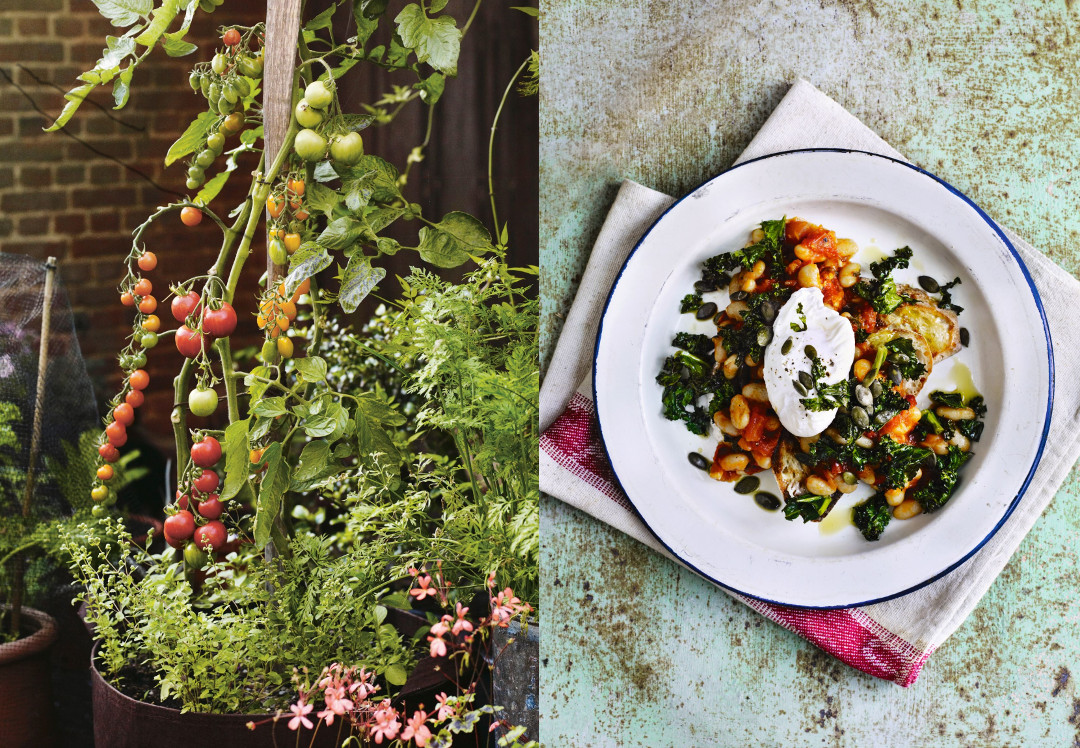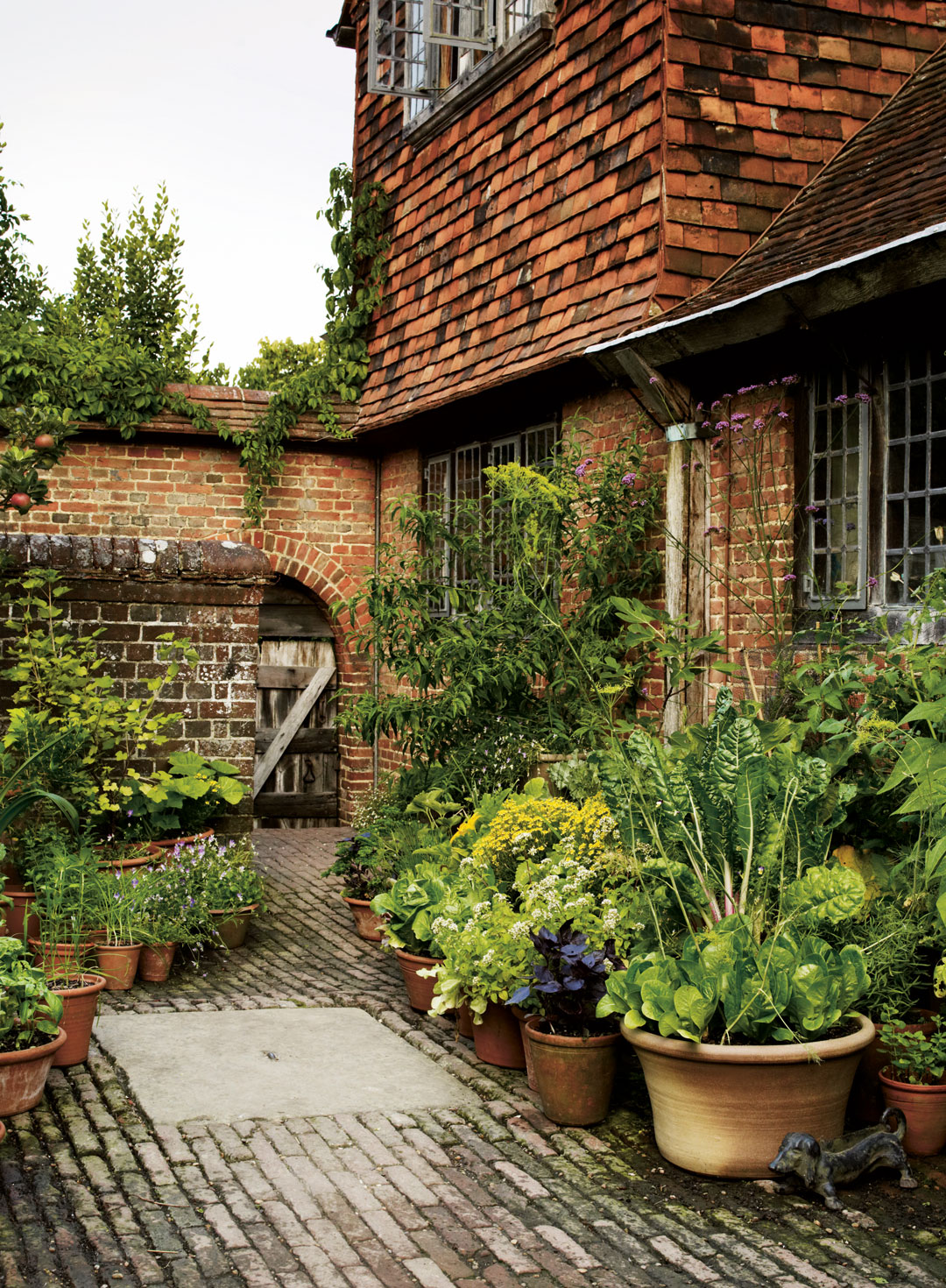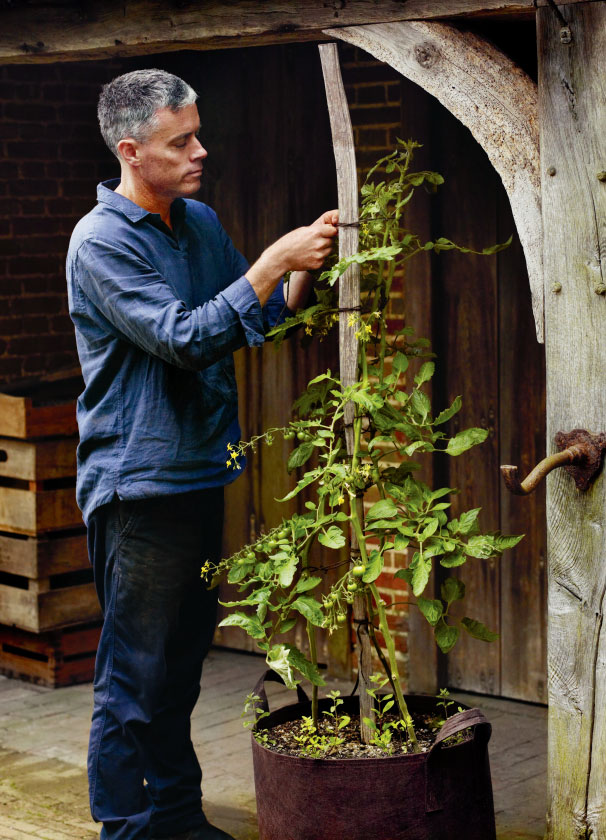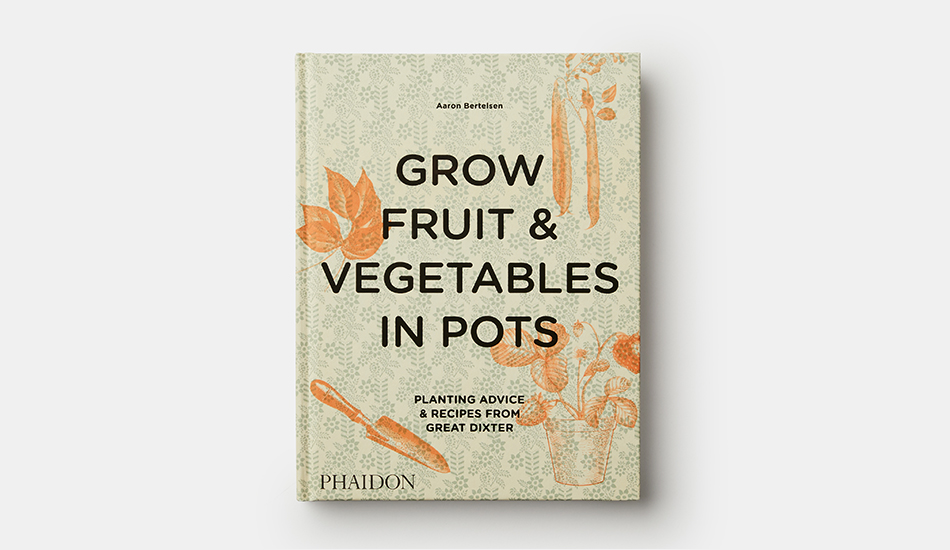
From Pot to Plate: How to grow and cook tomatoes
You don't actually need a garden to grow beautiful and tasty fruit and vegetables says Great Dixter’s Aaron Bertelsen
Aaron Bertelsen can handle almost all plants. Originally from New Zealand and trained at Kew Gardens in London, Bertelsen joined the iconic country house Great Dixter in 1996 as a student and has worked there as the vegetable gardener and cook ever since.
If you’ve visited this beautiful house, a couple of hours south of London, you may well have admired Bertelsen’s beds in the grounds, or enjoyed the fruits of his labours in Great Dixter’s café – or Refreshment Loggia, as it is known on site. Not content with the property’s conventional fruit trees and vegetable beds, Bertelsen has also branched out into the kitchen courtyard, establishing a thriving and deeply personal container garden on this brick-floored stretch of space, immediately beside his kitchen door.

Here he cultivates and plucks fresh herbs, fruit, and vegetables, going just a few metres from earthenware pot to cooking pot. There are a number of not especially challenging crops in this delightful little garden – such as basil and lettuce – but there are also a few that make him reach beyond his conventional skills and call on divine intervention.
In his new book, Grow Fruit & Vegetables in Pots, Bertelsen says that, when it comes to tomatoes, he sometimes calls on the weather gods to bless the plants with plenty of sun.
“To grow good tomatoes, sow the seed in early spring,” he writes. “Plant out into a large pot – I would put two into a pot around 45 cm/18 inches in diameter – and insert a strong stake at the back for support. As they grow, cut the leaves off the lower part of the plants to let in light and allow air to circulate, and pinch out the leaves that appear in the joints between the stem and the branches. Water every other day, and feed them too, with tomato food or liquid seaweed, right through the growing season. After that, all you have to do is pray for sunshine.”

Once they have ripened, cooking with them is relatively easy. “A handful of cherry tomatoes straight from the vine, chopped and stirred into a bowl of pasta, needs nothing more than a splash of good olive oil and a twist of fresh black pepper to make a supper fit for a king,” he says.
However, for a slightly more challenging dish, try cannellini beans on toast with crispy kale. For this you’ll need four good-size tomatoes, or eight to ten cherry tomatoes, coarsely chopped, as well as four really fresh eggs; 100 g/3½ oz prepared curly kale; five tablespoons extra virgin olive oil; the grated zest of a lemon; one crushed clove of garlic, crushed; a thyme sprig, leaves stripped from the stems; one 400-g/14-oz can cannellini beans, drained and rinsed; as well as bread, for toasting, two tablespoons of pumpkin seeds and salt and pepper.
Preheat the oven to 180 degrees C/350 degrees F/Gas Mark 4. Fill a pan with 5 cm/2 inches of water and crack the eggs into ramekins. Bring the water to a gentle simmer, then gently slide the eggs into the water and cook for 3 minutes. Using a slotted spoon, transfer the eggs to a plate and set aside. Leave the water over low heat. Put the kale into a bowl, add 2 tablespoons of the oil, the lemon zest and ¼ teaspoon of salt and massage the ingredients into the leaves.

Spread the leaves out over the bottom of a large roasting pan or baking sheet and bake for 10–12 minutes, turning once or twice during cooking, until crisp. Remove and set aside. Meanwhile, warm the remaining oil in a pan. Add the tomatoes to the pan along with the garlic and thyme. Cook over medium heat for 8–10 minutes until the tomatoes have started to break down a little and some of their juices have been driven off. Add the beans to the pan and gently warm through, then season to taste with salt and pepper. Toast your bread. Slide the eggs back into the simmering water and cook for 30 seconds. Remove the eggs with a slotted spoon and drain briefly on paper towels. Place the toast onto warmed plates, spoon over the beans and then sprinkle over the crispy kale. Top with the poached eggs, sprinkle with the pumpkin seeds and serve.
There! You’ve gone from pot to plate in a little over 30 minutes. For a more detailed version of this recipe, as well as more tips on growing artichokes and much more besides, order a copy of Grow Fruit & Vegetables in Pots here.